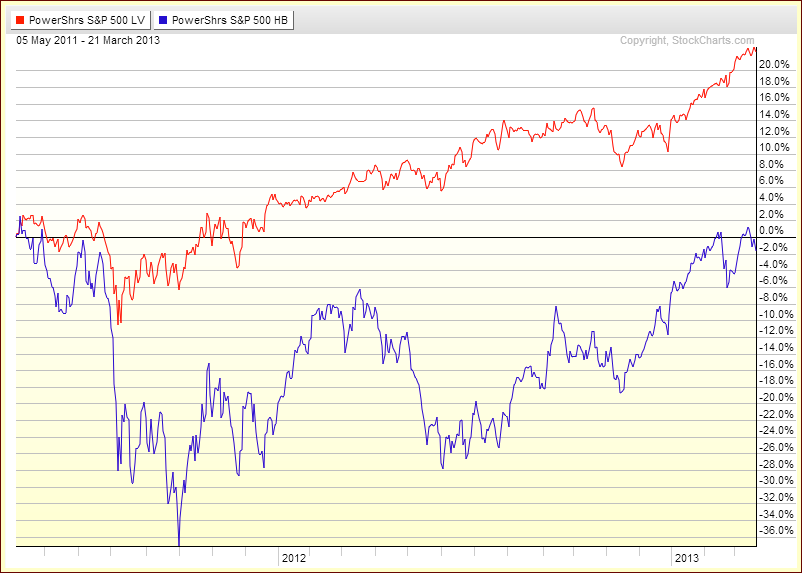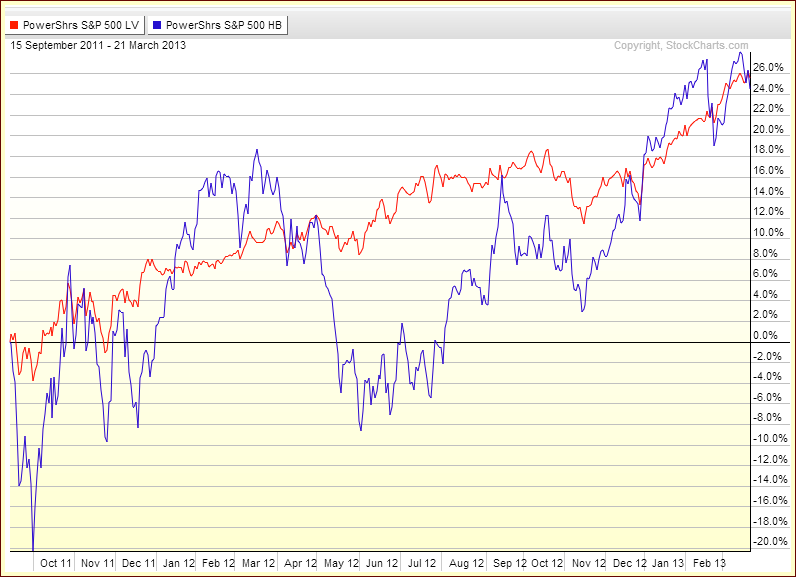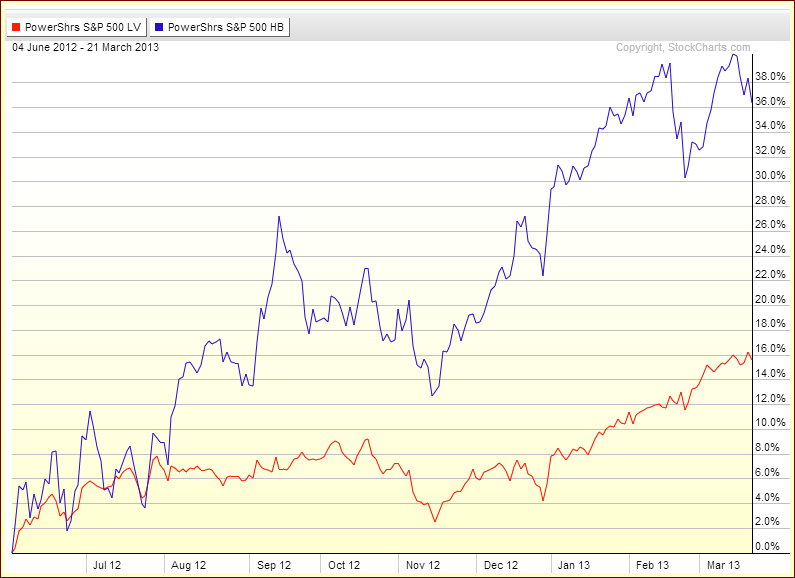I have not been able to avoid articles extolling the virtues of investing in low volatility -- also known as 'minimum volatility' -- exchange-traded products. These ETPs typically talk about the tendency of investors to become overly enamored with some of the sexier, more volatile stocks and accordingly bid these up to unsustainable valuations. On the other hand, the tortoise-like approach to lower volatility stocks tends to avoid these stocks that are fashionable for short periods of times, so-called “story stocks,” momentum favorites and stocks with hockey-stick charts that sometimes become mini-bubbles. Instead, plodding growth, dividends and total return are the main areas of focus.
I have discussed the most famous of these low volatility ETPs, the PowerShares S&P 500 Low Volatility Portfolio (SPLV) in a number of different contexts in this space, including:
- Performance of Volatility-Hedged ETPs
- Comparing SPLV and VQT
- SPLV vs. XLP
- Beyond SPLV: The Expanding Universe of Low Volatility ETPs
- The Options and Volatility ETPs Landscape
This time around my intent is to let the graphics speak for themselves, so without further ado, I give you three snapshots of the performance of SPLV against the performance against its more volatile sibling, the PowerShares S&P 500 High Beta Portfolio (SPHB).


I realize that every historical period in the financial markets is unique and that one can cherry pick graphics to make any imaginable point, but I think the three charts above tell almost the full story, which is this:
- Over the long-term, low volatility stocks have a high probability of outperforming high volatility stocks on an absolute basis and particularly on a risk-adjusted basis.
- Even in bull markets, the total return approach of low volatility stocks often makes them comparable to or even superior to high volatility stocks.
- The biggest risk associated with a low volatility approach is being left behind in a sharp bull move, when more defensive sectors can underperform substantially.
The real question to ask yourself is which risk concerns you the most: a large drawdown or missing out on a large chunk of a bull rally?
Disclosure(s): none
